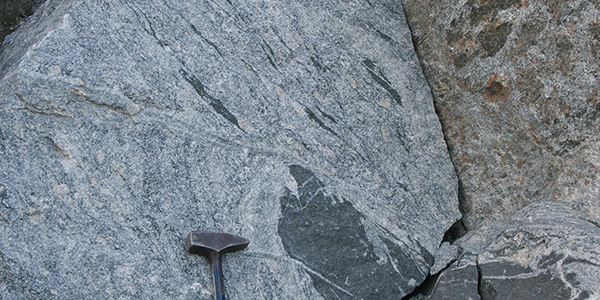Magma Transfer Zone, Pedreiras Silveira and Pelotense, Rio Grande do Sul, Brazil
|
| This page describes two quarries close to each other, close to the town of Pelotas, and part of the Neoproterozoic Pelotas Batholith, Dom Feliciano Belt in Rio Grande do Sul. They are comprised of a heterogeneous, banded and layered granite, formed by multi-pulse granitic magmas and with numerous blocks of earlier magmatic pulses and cut by later pegmatitic dykes. Earlier pulses, preserved as blocks inside later magmas, are: a) dioritic migmatites with peritectic Hbl, b) banded granitoids with a weak gneissosity and c) a coarse porphyritic granite. These blocks are enclosed in medium- and fine-grained, layered grey granite with a number of curious spotted textures. Spots are white and surround grains of magnetite in some localities or titanite in other localities. This complex sequence suggests that these quarries marked the passageways of anatectic melts formed by the melting of pre-existing granitoids/diorites at depth. This quarry also has a magnetite granite which has complex relations with pegmatites suggesting contemporaneity between the two. |
Magnetite granite with complex relations with pegmatites
